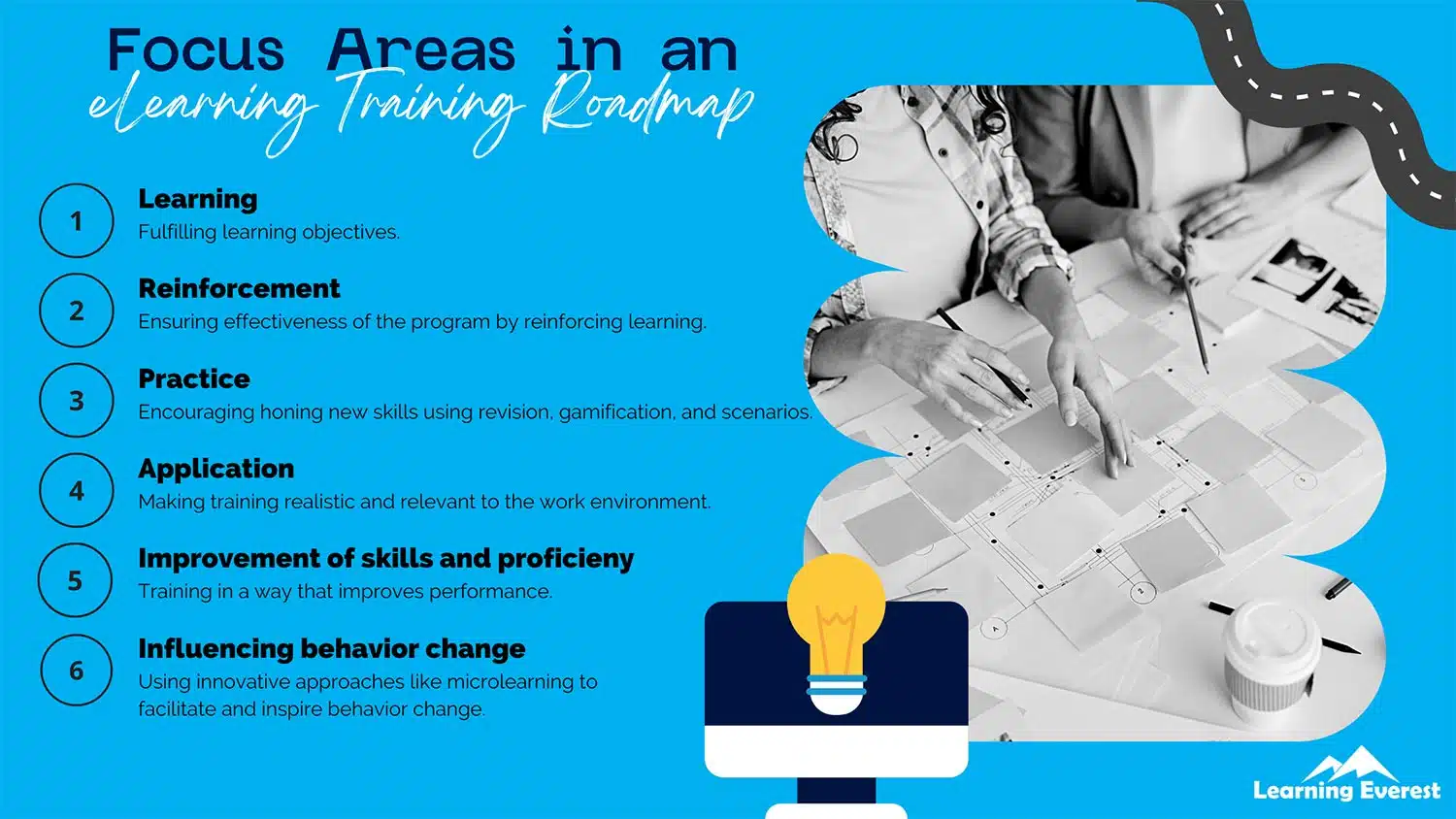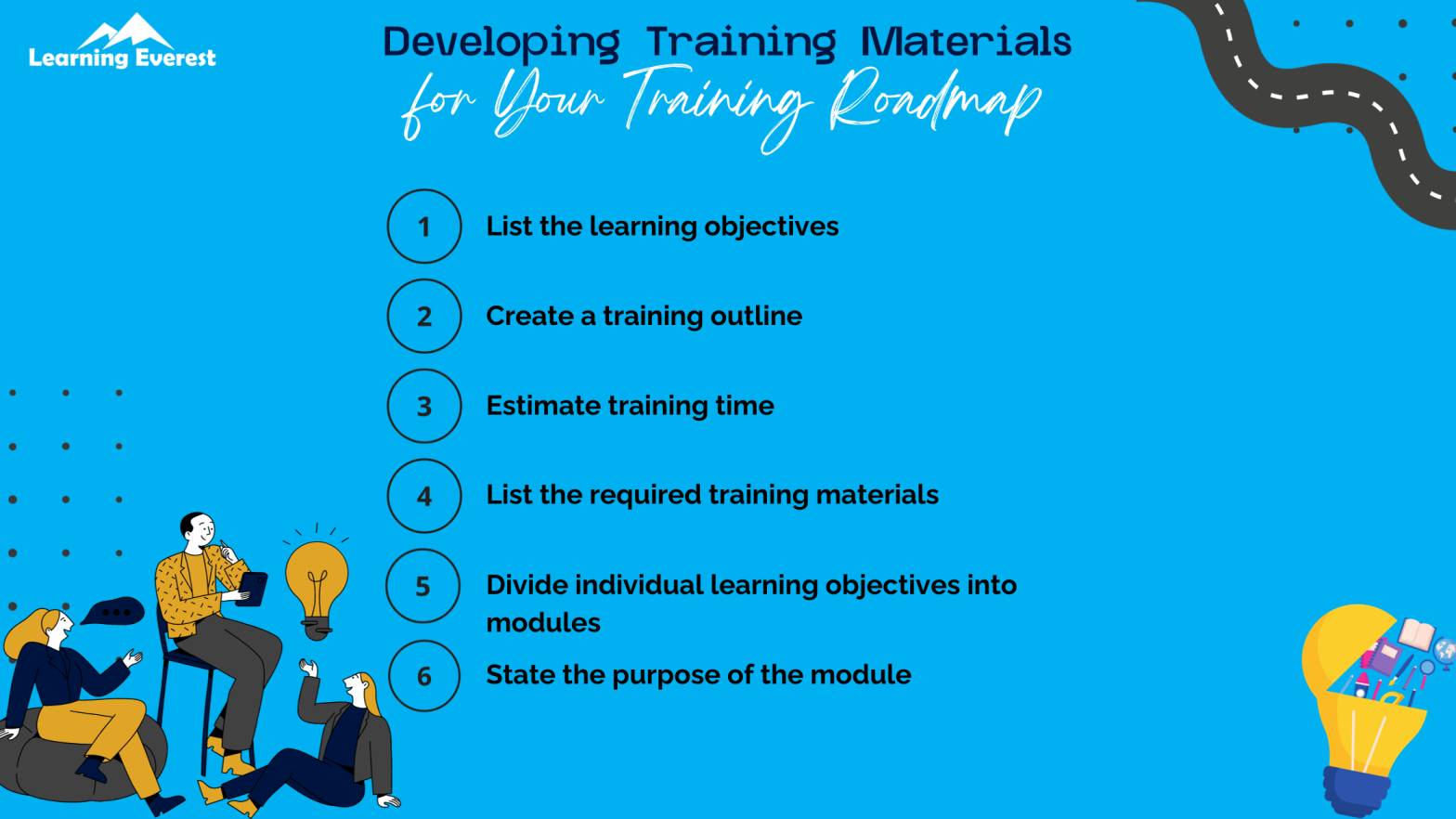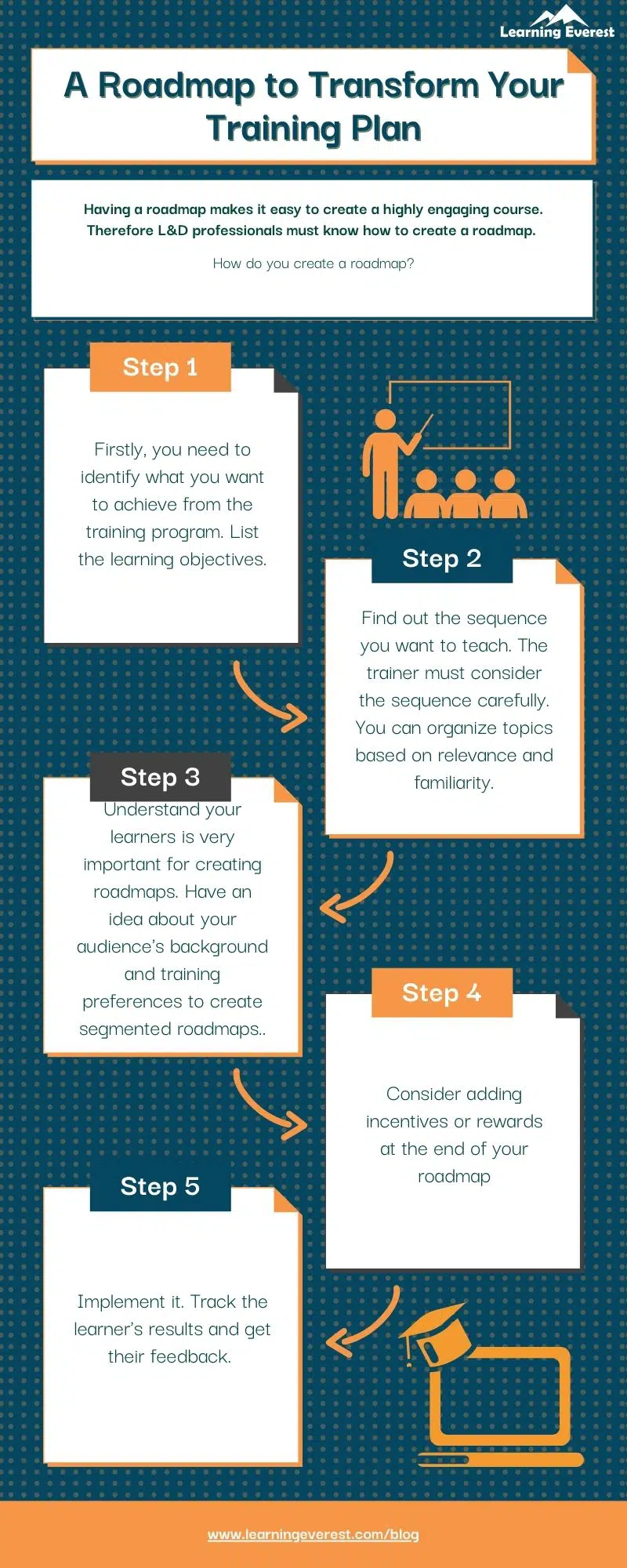Organizations need to follow a strategic training roadmap to achieve the best possible employee training. A training roadmap is also known as a learning path. It is a sequence of well-structured learning activities that teach specific topics. It is a way to map out training and make the learning process smoother. Creating a roadmap requires considering each training segment as part of a whole.
Table of Contents
- What Is a Training Roadmap?
- The Value in Mapping your Training
- Creating a Roadmap for your Training Plan
- Evaluate and Revise
- How Can I Improve My Training in my Organization?
- Why Is Effective Training Important?
- Infographics
- Knowledge Check!
- Frequently Asked Questions (FAQs)
- How do you create a training roadmap?
- Why do we create training roadmaps?
- What is a course roadmap?
- What is a training plan?
What Is a Training Roadmap?
A training roadmap has a structured sequence of training activities. They cumulatively teach a topic. A roadmap is a method of mapping out training. It makes learning more accessible and better for the audience.
While creating a roadmap, thought is put into each course as part of a whole. All the classes would, at last, achieve a collective value. Creating a training roadmap requires a more excellent investment of time. But the long-term rewards —better performance, higher engagement, reduced costs, and stronger relationships with trainees— will make that quick extra work seem insignificant. A strong employee training roadmap can be the backbone of an organization. Creating a roadmap for employee training can be as challenging but overwhelming.
The Value in Mapping your Training
Training roadmaps are comprehensive. They distribute the learning over multiple sessions. Therefore, trainers do not have to leave out important content due to time restraints. Thus, it ensures that trainees can gain complete knowledge of the topic over a strategic period.
They ensure every training session resonates with the learner. Therefore, it saves time because it minimizes the need to re-train learners. They increase an employee’s interest in learning because they show how each part of training fits together, assisting future career growth.
Creating a Roadmap for your Training Plan
Having a roadmap makes it easy to create a highly engaging course. Therefore L&D professionals must know how to create a roadmap. The following are some helpful information regarding the creation and use of eLearning roadmaps:
1. How do you create a roadmap?
-
- Firstly, you need to identify what you want to achieve from the training program. List the learning objectives.
- Once you have the learning objective, please find out the sequence you want to teach them. The trainer must consider the sequence carefully. You can organize topics based on relevance and familiarity. It is essential that what the learner must know first comes first.
- Understanding your learners is very important for creating roadmaps. If you have an idea about your audience’s background and training preferences, segmented roadmaps can be made for caring for different types of audiences.
- When creating the courses, you can consider adding incentives or rewards at the end of your roadmap. These can be discounts for customers, badges, or certificates.
- Once the roadmap is ready, implement it. Then, the learners go through the roadmap you have developed. Track their results and get their feedback. It can help in creating roadmaps in the future.
Have you felt that your employee training is not getting measurable results? It might be because the training program is not comprehensive enough to meet the objectives or does not follow a good roadmap.
2. Building eLearning programs using eLearning roadmaps
A structured approach can be used to produce a personalized roadmap. Roadmaps are used as building blocks to establish a clear vision about how the project will be developed. Roadmaps will help deliver the mandate of performance improvement, behavioral change, and achieving learning.
The following are the focus areas that come on the roadmap:
- Learning
- Focus on the learning objectives.
- Adopt an approach that will transform the content and fulfill the learning objectives.
- Conduct a detailed training audience analysis to understand who your learners are.
- Reinforcement
- Measure the effectiveness of your program by placing before and after tests.
- Identify potential reinforcement opportunities.
- Have revisions and refresher training for learners who additional training support.
- Practice
- Instead of having practice sessions at specific places within the course, place them throughout.
- Encourage the learners to review their learning based on this performance and feedback.
- Offer a gamified learning path for learners through a series of practice sessions. Create multiple levels mapping to different proficiency levels.
- Application
- Make training content realistic. It must be relevant to the work environment
- Include “How to…” and “Step-by-step…” type videos in the course.
- Improvement of skills and proficiency
- Learners value training that helps them improve specific aspects of their performance. Scenario-based training can be used where eLearning scenarios address different aspects of job performance.
- Influencing behavioral change for better performance
- Customize your roadmap to deliver personalized learning behavioral change.
- Include microlearning and video-based learning to think differently on aspects that can trigger behavioral change.

Training Roadmap – a Transformational Journey
3. How to find your learning objectives?
- Who is the audience of the training program?
- What are the short-term goals of your organization?
- What long-term goals does your organization have?
- What timeframe does your organization have to fulfill your goals?
- How does your organization measure success?
- What is considered a success by your employees?
4. Adult learning principles must be kept in mind while creating a training roadmap.
Adults participating in employee training have more experience than students in an academic setting. Therefore, the characteristics of adult learning must be kept in mind while creating the training roadmap
- Remember, experience is essential in any learning.
- Incorporate real-world applications while building the training program
- The learning path must be attractive to an adult learner.
- There must be scope for learner involvement.
5. Using the correct training plan
While developing the training plan, you have to decide whether to create the training materials in-house or hire someone to make the training materials. Several companies create employee training templates and materials. Using such services can be helpful and would help your organization to get quality resources to improve employee engagement. You need to select the activities you would implement.

Training Roadmap – A Transformational Journey For An Organization
The following training plans can be used for employee training based on the objectives of the course:
- Classroom-based training
- Interactive training
- On-the-job training
- Social learning
- Online training
- Technology-based learning
- Simulators
- Coaching/mentoring
- Instructor-led training
- Roleplaying
- Films and videos
- Case studies
- Group discussion and activities
- Management/leadership-specific activities
- Lectures
6. How Do You Develop Training Materials?
Training materials are vital and need to be created by evaluating the learning needs. The following strategies can be used:
- Make a list of the learning objectives
- Develop outlines in detail about how training will be conducted.
- Estimate the time required
- List the required training materials
- Divide individual learning objectives into separate modules.
- State the purpose of the module.

Developing Training Materials for Your Training Roadmap
Evaluate and Revise
Evaluating the program’s success by collecting feedback from trainees is very important. The feedback would help you understand how practical the training session was.
How Can I Improve My Training in my Organization?
Consider the following steps to improve a training program
- Utilize digital tools to make your training more engaging.
- Keep in mind what the program should achieve.
- Use interactive games or roleplays.
- Create a possibility to exchange knowledge and experiences.
Why Is Effective Training Important?
An effective training program allows you to strengthen skills that each employee needs to improve. They boost employees’ confidence and educate employees about the procedures and expectations of the business. Regular training fosters a caring and supportive workplace. Thus, employees feel appreciated.
If you consider all these elements discussed seriously, it will help you create a roadmap effectively. A practical roadmap acts as a guide in conducting the training.
Infographics

A Roadmap to Transform Your Training Plan
Knowledge Check!
Frequently Asked Questions (FAQs)
How do you create a training roadmap?
The following are the steps to create a training roadmap:
- Defining the learning objectives
- Turning the objectives into training topics
- Sequencing the topics
- Developing, implementing, and showing the reward
- Releasing your training
Why do we create training roadmaps?
A training roadmap helps individuals grow personally and professionally. It is a sequence of learning activities that teach specific topics. This is a way to map out training to make learning smoother. Organizations need to follow a strategic training roadmap to achieve the best possible employee training.
What is a course roadmap?
A course roadmap is also referred to as a “learning path.” It is a structured sequence of training activities that cumulatively teach a topic. It is a method of mapping out training. It makes learning more accessible and better for the audience.
What is a training plan?
A training plan communicates to management about the details of the proposed training program. It authorizes the project team to expend resources. It is for the proposed training program’s development, implementation, and execution.






This was super helpful to get my plan started, thanks!